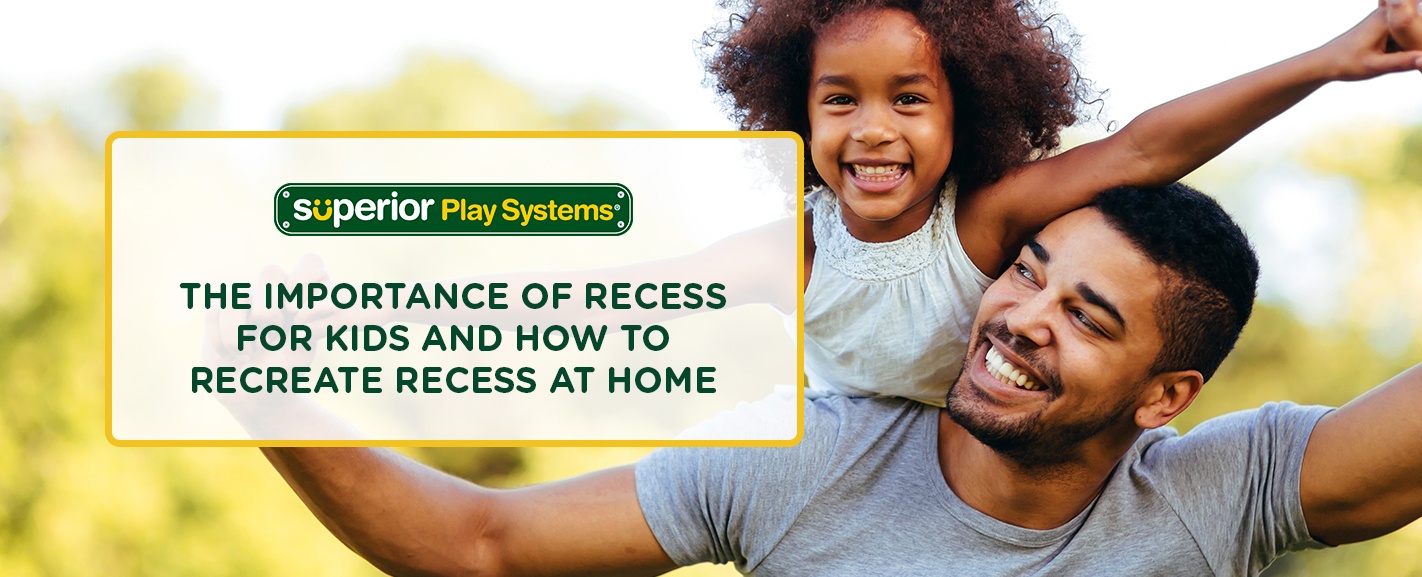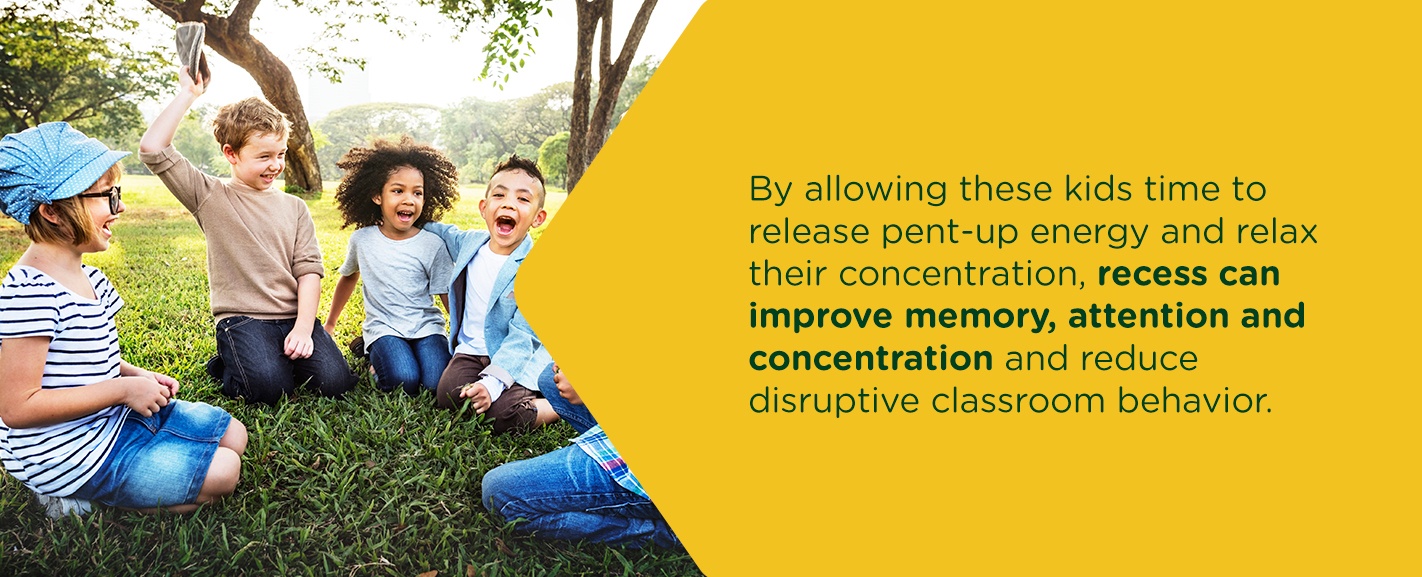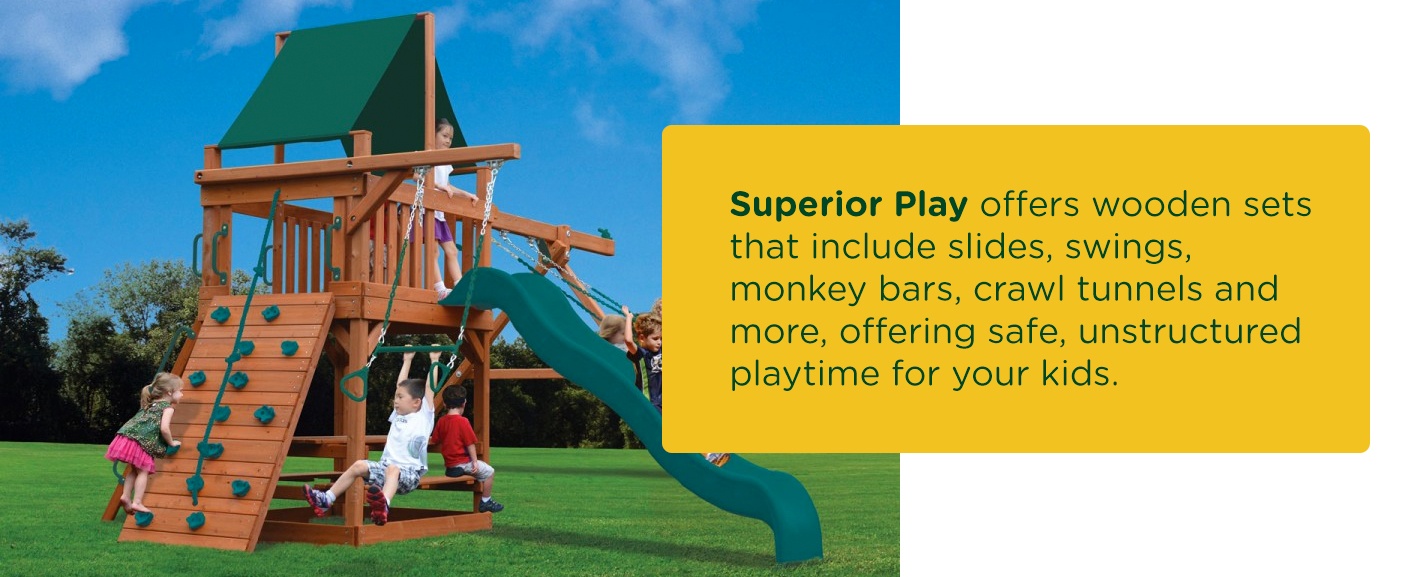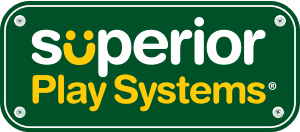The Importance of Recess for Kids and How To Recreate Recess at Home

- The Importance of Recess and Unstructured Play
- Ways That Recess Benefits Children
- How to Recreate Recess at Home for Your Kids
- Why Outdoor Playsets Are Great for Recess at Home
There are many reasons parents may choose to home-school their children. Even those who choose to send their kids to school may find themselves at home with the children due to a teacher strike, inclement weather or pandemic. If you are one of these parents, you might wonder how to incorporate recess into your child’s daily schedule. How do you support unstructured play at home, and why is recess important for kids?
The Importance of Recess and Unstructured Play
The value Americans assign to recess and unstructured play has fluctuated dramatically over the past century. When you were a child, odds are you engaged in open-ended play and recess every weekday. From pretending to be a pirate in the backyard to adventuring on the school playground, much of your day likely revolved around play.
In contrast, today’s kids spend four hours to nine hours in front of screens each day and may not step outside. To make matters worse, schools are minimizing playtime in the name of learning, with some children spending as little as 15 minutes outside for recess. Other schools have even eliminated recess altogether. In its place are longer classes and more time spent inside. Educators hope this strategy will improve standardized testing scores.
Not all learning happens in the classroom, and less playtime doesn’t necessarily produce smarter kids. Elementary students can only focus for up to an hour before they begin to fidget and act out. At this point, most lessons fall on deaf ears. However, periodic breaks or a midday recess may improve their attention spans and boost knowledge retention. Thus, children who play may learn more — even with fewer and shorter classes.
Unstructured play is also imperative to a child’s development and ability to learn within a school setting. This kind of play is free of adult intervention and has no objectives or goals. When engaging in unstructured play, children have the freedom to use their imagination, create their own rules and limits and exercise their creative problem-solving skills. Exercising these abilities promotes a sense of independence that can help them grow into successful, self-sufficient adults.
Free play also allows children to explore themselves and make mistakes without fear of judgment or failure. They can improve social skills as they work with others to solve problems and make rules. This self-exploration and decision-making naturally encourage creativity, innovation and collaboration, which are all valuable in today’s society — even if they aren’t evident in test results. Integrating recess into the school day and encouraging unstructured play fosters development essential to proper social, cognitive, behavioral and physical growth.
Ways That Recess Benefits Children
Many parents and teachers support the reduction and elimination of recess in favor of additional classes. However, there are many reasons why recess is important for children. By keeping this midday break on students’ schedules, the education system helps promote kids’ social, behavioral, physical and cognitive development.
1. Social Development
Kids start to learn social skills as soon as they begin interacting with others. Often, these first non-familial interactions take place in the classroom. There, they learn how to communicate with their peers respectfully. Children must also learn how to properly engage with others when there is no adult present, making recess an invaluable part of understanding social cues and reinforcing skills.
At recess, children explore and test the lessons they learn in class. While among their peers, they must work together, speak up for themselves and handle difficult situations on the playground. They also develop social skills like sharing, negotiation, self-control and perseverance, all of which they’ll carry into adulthood.
It’s also important to note that an unstructured setting includes little adult intervention. While there may be teachers and supervisors nearby, true social development occurs when children are allowed to control interactions with their peers. Recess helps kids learn more about body language, facial expressions and what emotions look and feel like. Then, they must figure out how to respond properly when a situation doesn’t go their way.
2. Behavioral Development
A child’s behavior can be difficult to manage, especially in a classroom setting. Teachers only have so much authority over kids, and if they misbehave too often, they may send children home from school or suspend them as punishment. This punishment may be less effective than most realize. The reason many young students act out is because they lack adequate playtime in the first place.
In the classroom, students may sit for six to eight hours trying to listen quietly and obediently to their instruction. Without allowing kids a break, this sustained good behavior may be difficult for children to maintain. Eventually, they’ll either stop listening or act out as a means of distracting themselves and others. These misbehavior moments occur more frequently among children who have attention deficit hyperactivity disorder, attention deficit disorder and other behavior problems.

Students with behavioral disorders can benefit significantly from unstructured play during recess. By allowing these kids time to release pent-up energy and relax their concentration, recess can improve memory, attention and concentration and reduce disruptive classroom behavior. One study even found that one-on-one child-led play sessions with a teacher reduced stress and improved behavior among disruptive kids. Of course, recess can also improve the neurotypical children’s behavior and prevent them from developing problems later on.
3. Physical Development
Experts recommend children engage in at least one hour of physical activity per day. For many kids, recess is their only opportunity to get some exercise. Even though they may not climb the jungle gym for a full hour, even a few minutes of physical activity can help them release energy, burn calories and encourage a healthy weight and lifestyle.
Many researchers worry that a lack of recess — due to both systematic elimination and school closures — will have long-term consequences for children. Often, children gain weight over the summer when school isn’t in session. They then maintain this weight during the school year, increasing their risk of adult obesity. Recess at home or school is essential to preventing obesity and demonstrating the significance of physical activity to kids.
In addition to helping children maintain a healthy weight, recess also has physical benefits in the sense that it allows students to develop their motor and sensory skills better. As kids run, jump, climb and crawl, they rely on all their senses to explore the playground. Meanwhile, challenges and obstacles test their reflexes, balance and flexibility, allowing children to sharpen their fine and gross motor skills.
4. Cognitive Development
Scientists have only recently begun to study the effects of recess on cognitive development. There’s already evidence of a strong correlation between the two. Children naturally develop an intellectual understanding of the world around them through interactive experiences and unstructured play. Students can optimize cognitive processing both in and out of the classroom by taking a recess. Regardless of what activities they choose during this time, the break itself improves their ability to refocus and be more productive.
One study found that short breaks that included physical activity during the school day also improved the length of time children focused. During exercise or spurts of physical activity, changes occur within the brain. These shifts include increased neurotransmitters, oxygen saturation and growth in the brain-derived neurotrophic factor, a molecule related to learning and memory. The improvement of these cognitive functions translates to increased performance and more on-task behavior in the classroom.
Researchers have even linked recess to better academic performance and higher test scores. In Shanghai, China, children have more time for recess and unstructured play throughout the school day. Some elementary schools even dedicate almost 40% of their day to recess. In higher grades, schools also incorporate structured recess times for morning and in-class exercise. Naturally, these children spend less time in class. Yet, in 2015, their test scores were higher than anywhere else in the world.
How to Recreate Recess at Home for Your Kids
More schools are offering virtual options than ever — whether to present an alternative to in-person classes or to keep kids healthy. Parents who prefer an at-home experience but want to be more involved may also choose to home-school their kids.
Regardless of whether your kids are home schooling or attending classes virtually, recess isn’t on the schedule unless you incorporate it. Taking the initiative is essential if you want your children to reap the benefits of recess. Planning a recess can seem overwhelming if you’ve never had the responsibility before, but it’s easier than you probably think.
Below, you’ll find a few tips and recess at home ideas to spark your creative side and begin scheduling playtime for your kids:

1. Get Outside
One of the best ways to recreate recess at home is to get outside. Odds are your kids complete most courses inside. Kids need vitamin D, fresh air and room to play and explore. Why not give them a break from sitting in a room by stepping out the front door and exploring the world around you?
Leave all technology behind for an hour and explore the neighborhood. Accompany your little ones on the adventure, but let them lead the way. Join them in searching for shiny objects, splashing through puddles and soaking in the sun. Interfere with their free play only when it’s time to return home and finish their classwork.
2. Take a Hike
You might also choose to go to the park or local nature preserve for a hike. Let your kids pick the path to spark some excitement and a spirit of adventure. While it may be tempting to plan an activity like geocaching, it’s best to leave any structure out of recess.
Instead, let your children pick up sticks, observe caterpillars and pick flowers on their own accord. If you want to switch things up, change the scenery with a new park, coastline or forest. An unfamiliar view will offer a unique environment to explore, and visiting someplace different is often enough to interest kids.
3. Go on a Bike Ride
If the idea of going on a hike doesn’t thrill your kids, try toting the bikes along. Cycling is an excellent workout for both kids and adults and can help relieve stress after a tough morning of classes. Riding a bike by themselves counts as an unstructured activity, boosting confidence and independence. Let your kids choose the bike path and route. You might even let them bring backpacks with snacks and water to enjoy at the halfway point.
4. Do an Exercise Video
Parents who would rather stay home for recess can try doing an exercise video with their kids. Choose a short one from social media or go all out with an online yoga class geared toward kids. Ask your kids what exercise is their favorite before making a final decision. Dance parties count, too!
Be sure to make the activity all about having fun. The goal shouldn’t be to lose weight, gain bigger muscles or get fit unless your child decides that it is their goal. If your child doesn’t want to finish the video, don’t force them to do so. After all, this is their playtime.
5. Play in the Pool
If you have a pool at home or one close by that is open, now’s the time to take advantage of it. Grab the floaties, water toys and squirt guns and let your kids go wild during their recess. Refrain from planning a specific activity like a water balloon fight or Marco Polo. Instead, take on the role as supervisor and try not to intervene unless a child is behaving poorly or acting unsafely.
6. Use Your Imagination
When all else fails, encourage kids to use their imagination. Gather sticks, leaves and flowers from your backyard or neighborhood and use them as props to spark your kids’ creativity. From garden fairies to cutthroat pirates, there’s no limit to what your child could be. Avoid joining in with them unless they ask you to. Removing yourself from pretend play allows your little ones to create narratives for their own enjoyment.
7. Let Your Kids Lead
Above all, you must let your kids take the lead during at-home recess. They should have control over themselves and the activity just as they would during recess at school. While it may be tempting to create a goal or objective for each activity, allowing kids to choose their route is an integral part of unstructured play. Only when they make their own decisions and play freely will they reap the social, physical, cognitive and behavioral benefits of recess.
Why Outdoor Playsets Are Great for Recess at Home
Another brilliant recess idea for home schooling involves buying an outdoor playset for your backyard. Superior Play offers wooden sets that include slides, swings, monkey bars, crawl tunnels and more, offering safe, unstructured playtime for your kids. The following are some advantages to having a playset in your own yard:

1. Health and Safety
By purchasing a playset for your backyard, you can know for sure that the equipment for recess at home isn’t housing germs from multiple kids. Plus, your kids won’t come into contact with sick children while playing on it, thereby reducing their risk of catching all kinds of illnesses.
2. Visibility and Accessibility
Once your playset is up, there’ll be no need to drive to the park or cruise around town looking for a fun activity. Instead, your kids can take recess whenever you deem necessary. You’ll easily be able to supervise them as they play — something that may be more difficult to do at busy playgrounds.
3. Unstructured Play Support
Playsets also allow for unstructured and open-ended play. While the sets are wooden, your children may imagine them to be anything from an ironclad warship to a fighter jet. Add a trampoline to the mix to spark even more creativity and promote balance, coordination, cardio and core strength.
4. Customizable
Unlike a single slide or rope swing, playsets are fully customizable. At Superior Play Systems®, you can build your own set, choosing between multiple swing colors, shapes and styles and picking a model that suits your budget and needs. Superior Play Systems® even offers basketball hoops and trampolines for kids who have a competitive streak or love to jump.
Build a Better Recess With Superior Play
With Superior Play Systems®’ playsets, recess is always just a hop, skip and a jump away. As a bonus, your kids might end up having even more fun on one of our playsets than they did on the plastic jungle gym at school. Are you ready to give your kids the best recess ever? Browse our wooden playsets for sale and check out our unique designs, features and set heights.
Contact us for more information or find a dealer and visit a location near you to build a better recess today.


